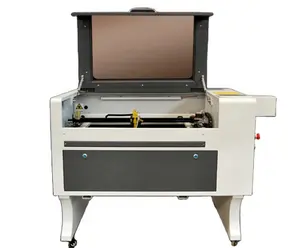
Desktop Type 4060 6040 Laser Cutting Machine Wine Bottle Cylinder Wood Carbon Dioxide Laser Engraving Machine Household

Bodor Economical C Series 6kw Automatic Focus Efficient Laser Cutting Machine Powerful Comprehensive Made In China






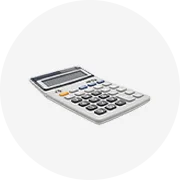
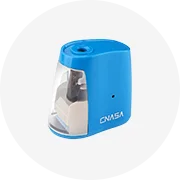
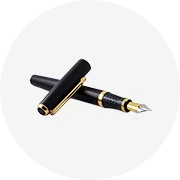
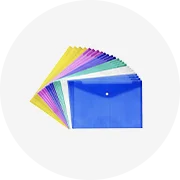
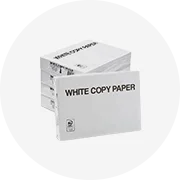
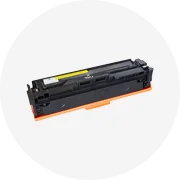
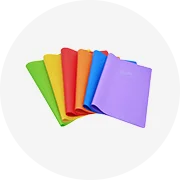
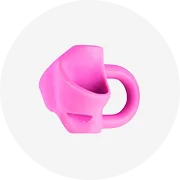


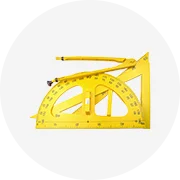
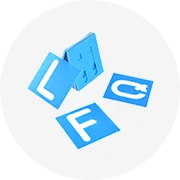
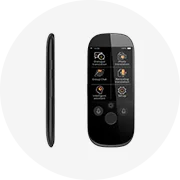

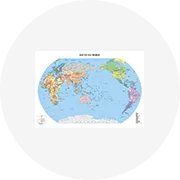

In the bustling world of production, efficiency is king, and when it comes to creating stickers en masse, the right tools can make all the difference. Enter the realm of laser cut sticker machines, a technological marvel that has revolutionized high-volume sticker production. These machines harness the precision of laser cutting, a process where a laser beam meticulously slices through materials, to deliver products with unparalleled accuracy. This introduction will guide you through the sophisticated world of laser cut sticker machines, their operation, and the various types available on the market, such as those found on Alibaba.com. We'll explore the intricate dance of CO2 and fiber lasers across different materials, and how these machines are optimizing industries by marrying speed with precision, all while keeping waste and operational costs at a minimum.
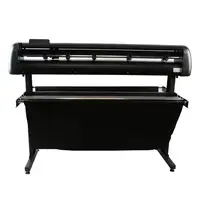
Laser cutting is a sophisticated thermal separation process, where a focused laser beam is directed onto material surfaces, causing them to melt or vaporize. This process begins once the laser penetrates a single point on the material, continuing along the predetermined geometry to separate the material. The use of process gases can enhance the cutting results, tailoring them to specific applications.
While other cutting methods like plasma cutting and mechanical cutting have their own sets of advantages, laser cutting stands out for its precision. Plasma cutting, although versatile for electrically conductive materials, often falls short in cut quality and is less energy-efficient, with higher levels of dust and noise. Mechanical cutting, on the other hand, involves direct contact and may lead to increased setup costs and contamination, whereas laser cutting offers a non-contact alternative that reduces these issues and provides greater flexibility.
The adaptability of laser cutting to various materials is a significant benefit. It can process a wide array of materials, making it a versatile choice for different industries. This capability is particularly relevant for laser cut sticker machines, which require precision and versatility to handle different sticker materials efficiently.

Alibaba.com showcases a diverse range of laser cut sticker machines tailored for various cutting and engraving needs. Among the selection, CO2 laser cutting machines are prominent, designed to handle both metallic and non-metallic materials, making them suitable for a wide array of applications. These machines are versatile and can be used for engraving as well.
Portable engraving options are also available, offering precision in creating intricate designs on smaller items like jewelry.
For those requiring detailed and precise contour cutting, vinyl cutter plotters equipped with laser positioning systems are on offer. These machines provide advanced cutting capabilities for vinyl stickers and films, ensuring high accuracy for complex patterns.
The range also includes specialized machines for specific applications, such as small desktop CO2 laser cutters, which are ideal for hobbyists or small-scale operations. On the other end of the spectrum, there are robust machines equipped with stepper motors and automatic feeding systems, catering to high-volume production environments.
A CO2 laser cutter is an automated machine that utilizes a carbon dioxide laser beam to engrave and cut various non-metallic materials. This type of cutter is equipped with a bed frame, cutting head, lens, mirror, generator, power supply, water chiller, control panel, and a CNC system. The CO2 laser operates at a wavelength of 10.6μm, making it suitable for a range of applications due to its ability to be absorbed by water and organic materials.
The CO2 laser tube, a core component of the cutter, is a sealed glass tube that includes the discharge tube, water cooling jacket, gas storage jacket, and return pipe. The resonant cavity of the tube comprises a total mirror and an output mirror, with the former often gold-coated to reflect the laser beam and the latter typically made of germanium to transmit the beam.
In operation, the CO2 laser cutter directs the laser beam onto the material's surface, melting and vaporizing it for cutting or engraving. The machine's high-energy beam is focused through a nozzle, accompanied by a stream of gas like Oxygen or Nitrogen, which aids in the cutting process. The power of the laser is adjustable, allowing for both high-intensity cutting and lower-power engraving, depending on the material and the desired outcome.
CO2 laser cutters are versatile tools used in various industries, including advertising, arts and crafts, packing and printing, leather and garment, architectural modeling, and the production of totem signs. They are particularly effective for creating intricate designs on materials such as wood, MDF, plywood, leather, plastic, and acrylic, making them ideal for producing high-quality stickers and labels for commercial use.
Fiber laser cutters are recognized for their ability to handle a diverse range of metals. They can efficiently cut through steel, stainless steel, aluminum, copper, brass, and various nickel alloys. These machines are also adept at working with coated metals and can manage materials with different textures and laminations. The precision of fiber lasers allows for clean cuts on materials, including tubing and pre-formed metals, although some specialized techniques may be necessary.
The power of a fiber laser cutter is a critical factor in its operation, with options ranging from lower to higher kilowatts (kw). Higher kilowatt ratings enable the laser to cut through thicker materials at a faster pace, directly impacting the productivity of the cutting process. The choice of assist gas also plays a role in the quality of the cut, affecting both the finish of the parts and the cutting speed.
Fiber lasers stand out for their operational cost-effectiveness compared to other cutting technologies like waterjets or plasma cutters. They are designed for long operational hours with minimal running costs, primarily when used with oxygen. The cost of nitrogen as an assist gas, however, is a consideration, as it can add to the operational expenses. Despite this, the efficiency and productivity gains offered by fiber lasers make them a valuable asset in metal fabrication settings.

Laser cutting technology is integral to high-volume production environments across various industries, including electronics, automotive, and medical sectors. The precision and speed of laser cutting make it an essential process for creating detailed components with clean lines and exacting measurements. The adaptability of laser systems allows for rapid design changes, enhancing the efficiency of production runs. Laser cutting's dieless operation eliminates the need for expensive dies, reducing both costs and lead times.
In the context of sticker production, laser cutters are particularly valuable. They can process a range of materials with precision, from thin substrates to more robust materials, without the need for tool changes. This capability is crucial for businesses that require the flexibility to switch between different sticker designs and materials quickly. The non-contact nature of laser cutting minimizes material waste, as it allows for tight nesting of parts, which is especially beneficial in high-volume sticker production scenarios.
The efficiency of laser cutters is further exemplified by their ability to combine multiple processes such as cutting, kiss-cutting, and engraving in a single operation. This multifunctionality streamlines the production process, enabling faster turnaround times and higher throughput, which is essential for meeting the demands of high-volume sticker manufacturing.
When considering the key features of high-efficiency laser cut sticker machines, it's essential to focus on the technical aspects that enhance performance and productivity. A paramount feature is the electrical to optical conversion efficiency, which in top-tier machines exceeds 30%, significantly reducing power consumption and operational costs. This efficiency is not only cost-effective but also promotes production efficiency.
The operational simplicity of these machines is another crucial feature, requiring only electrical power and eliminating the need for additional gas generation, which further lowers operating expenses. Maintenance is streamlined due to the semiconductor module design and the absence of a resonant cavity, which means no optical lens adjustments are necessary, enhancing the machine's stability and reducing maintenance costs.
High-quality laser cut sticker machines offer superior beam quality with a wavelength that is optimal for metal absorption, facilitating excellent cutting and welding capabilities. The fiber laser's ability to transmit light without the need for complex mirror systems simplifies the light path, resulting in a stable structure and maintenance-free operation.
The integration of protective lenses in the cutting head minimizes the consumption of precious consumables. Additionally, the design allows for easy integration with robots or multidimensional systems, enhancing the machine's versatility. The potential for expansion and easy upgrades is facilitated by the ability to couple a single laser source with multiple machines, allowing for simultaneous operation across various workstations.
Lastly, the compact size and lightweight nature of these machines provide flexibility in terms of placement, making them suitable for various operational setups and ensuring they occupy minimal space within production environments.
Laser cutters are celebrated for their ability to work with a diverse array of materials, making them ideal for sticker cutting machines. They can handle various metals, including mild steel, stainless steel, and non-ferrous metals, though reflective metals like aluminum may require fiber lasers for optimal cutting. Woods like plywood and MDF are also compatible, but one must consider their oil or resin content to mitigate fire risks.
In addition to metals and wood, laser cutters excel with paper, cardboard, and certain plastics. Acrylic, PMMA, and Lucite are particularly suited for laser cutting, as they result in polished-looking edges. POM, a plastic favored in engineering for parts like gears and medical instruments, is another material that benefits from the precision of laser cutting.
However, not all materials are suitable for laser cutting. PVC, for instance, should be avoided due to the release of corrosive and toxic fumes. Thicker polycarbonate sheets absorb infrared radiation, leading to discoloration and potential burning, making them unsuitable for laser cutting. Similarly, materials like ABS and HDPE tend to melt rather than vaporize, resulting in poor cut quality and a messy work environment.
Certain foams, such as polystyrene and polypropylene, are also ill-suited for laser cutting due to their flammability. Fiberglass, a composite material, poses challenges due to its glass content and the fumes from its epoxy resin. Understanding these material compatibilities and limitations is crucial for selecting the right laser cut sticker machine for high-volume production.
Laser die-cutting stands out as a premier technology for label cutting, offering precision and versatility. This method utilizes a high-power laser to cut materials, providing an unmatched level of accuracy. The process is controlled by a computer, ensuring that each cut is consistent with an accuracy of up to 0.001 mm.
The technology is particularly suited for soft materials like printed labels, as it eliminates physical contact, preventing crumpling or tearing during the cutting process. The precision of laser cutting allows for narrow cuts and minimal heat-affected zones, which means that even delicate and non-rigid materials can be cut with high accuracy.
Another advantage of laser die-cutting machines is their ability to handle complex contours and shapes with ease, thanks to the sophisticated control of the laser beam. This high degree of automation ensures that even sharp corners and intricate designs are cut cleanly, without distortion or rounding.
Furthermore, the efficiency of CNC laser machines is notable. They can be quickly reprogrammed for different products, maintaining low production costs without compromising the quality of the output. This adaptability makes them ideal for both small and large print runs, ensuring that each piece meets precise factory specifications.
Laser cutting stands out for its exceptional speed and precision, making it a preferred method over traditional cutting techniques. The process is governed by computer-operated programs that enable meticulous cutting within a remarkably narrow accuracy range. The precision of laser cutting is such that it can focus on areas as small as about 25 microns, comparable to a quarter of the width of a human hair, and achieve cut widths that are incredibly minute, often less than 0.001 inches. This level of detail translates to dimensional accuracy that is typically within ± 0.0005 inches. The integration with CAD software further enhances the accuracy, guiding the laser in its intricate cuts. This precision is not just about the fineness of the cut; it also contributes to the speed of the operation, as the laser swiftly and accurately navigates through the material, reducing the need for secondary processing and thus speeding up the entire production cycle.
Laser cutting technology stands out for its precision, which translates into a significant reduction in material waste. Unlike traditional cutting methods that may result in excess due to less accurate cuts, laser cutters achieve exact dimensions, optimizing the use of materials. This precision not only conserves fabric but also contributes to cost-effectiveness, as it minimizes the amount of material discarded during the production process. The ability to make meticulous cuts ensures that even the smallest pieces can be utilized effectively, which is particularly beneficial in high-volume sticker production where every inch of material counts. Furthermore, the absence of chemicals in the laser cutting process eliminates potential costs associated with their purchase and disposal, enhancing the overall sustainability and economic efficiency of the operation.
In conclusion, the top laser cut sticker machines offer a symphony of speed, precision, and versatility, essential for high-volume production. The sophisticated technology behind these machines, from CO2 to fiber lasers, provides businesses with the tools to execute intricate designs and complex cuts with remarkable accuracy. The adaptability to various materials and the integration with CAD software underscore their importance in diverse industrial applications. With the ability to reduce waste and enhance cost-effectiveness, these machines are not just a purchase but an investment in efficiency and sustainability. As we have seen, whether it's the robustness required for large-scale operations or the finesse needed for delicate materials, the right laser cut sticker machine can elevate the production process, ensuring that each sticker is a testament to the harmony of innovation and functionality.